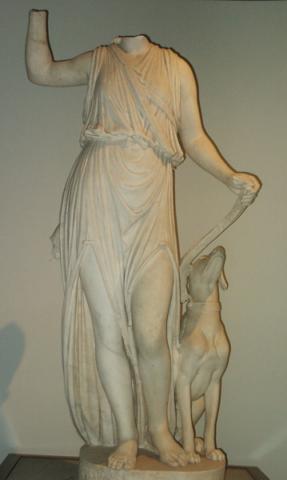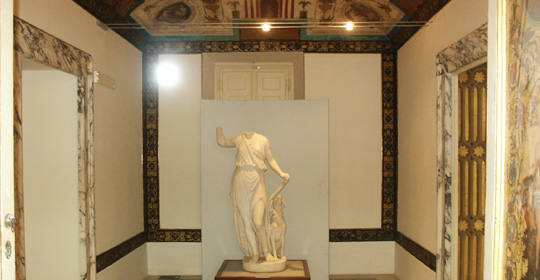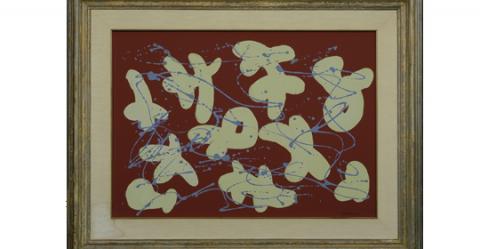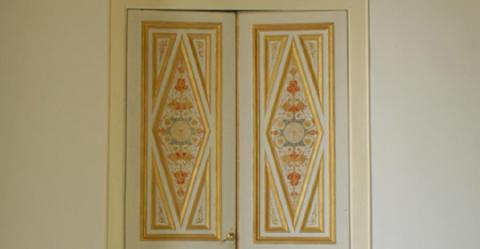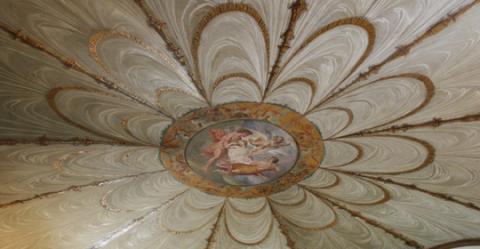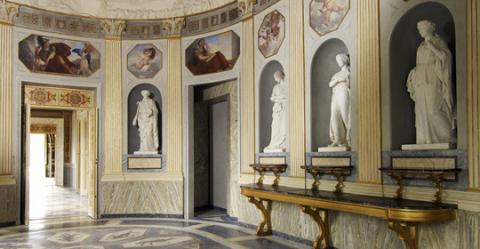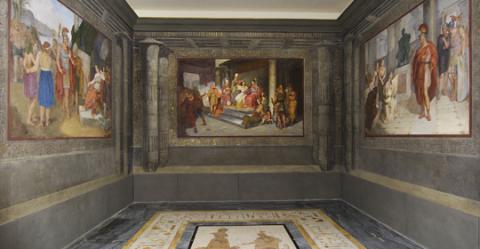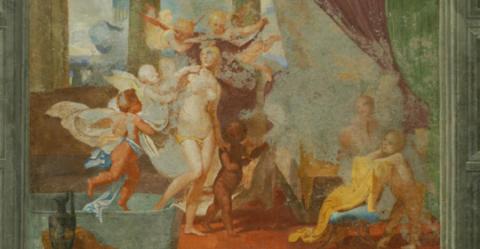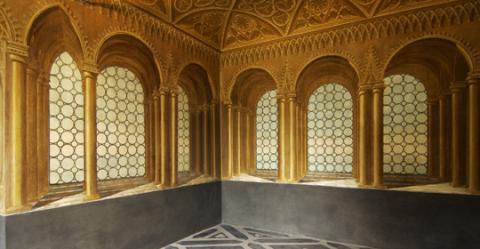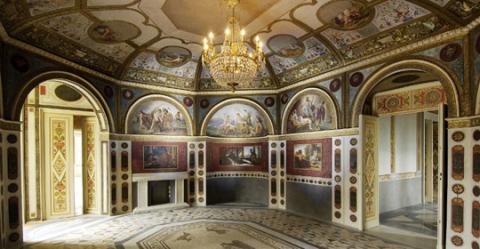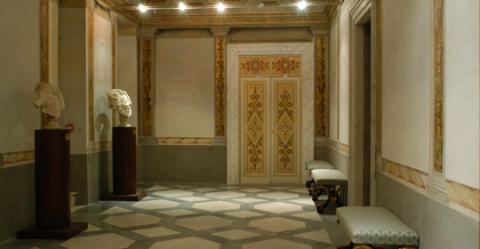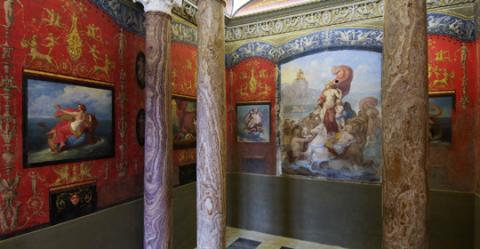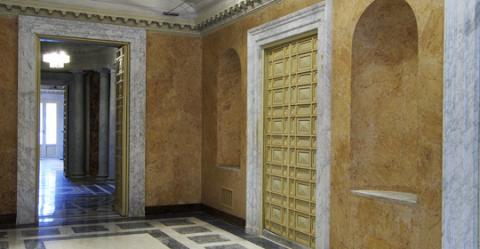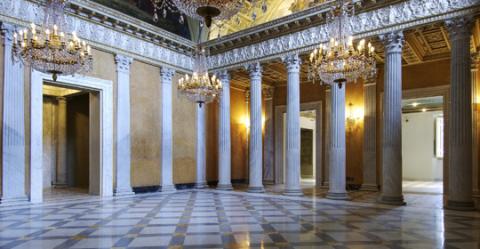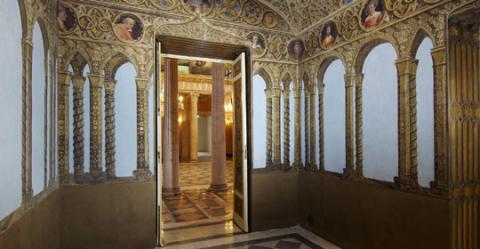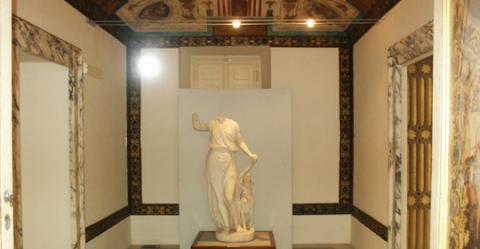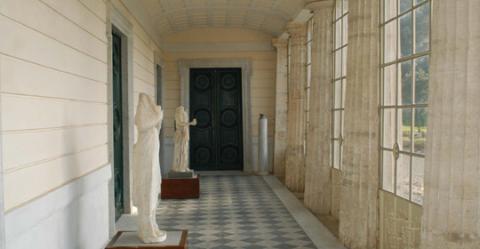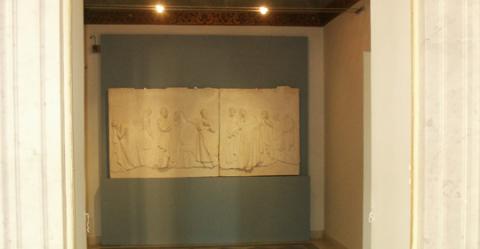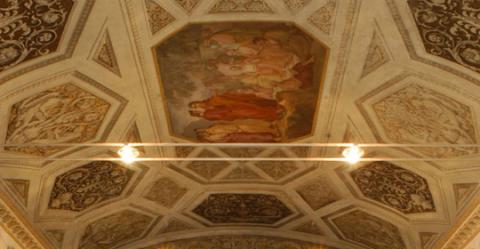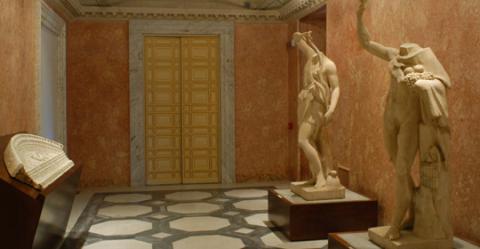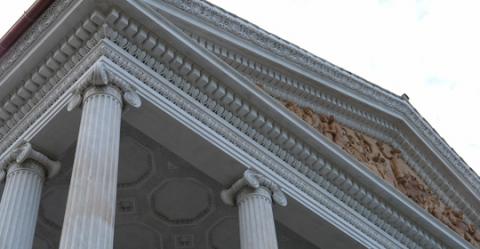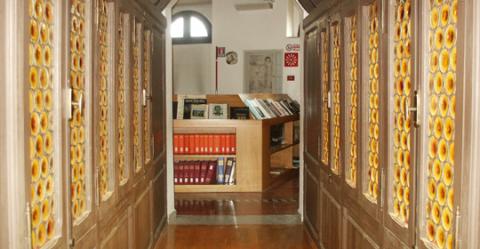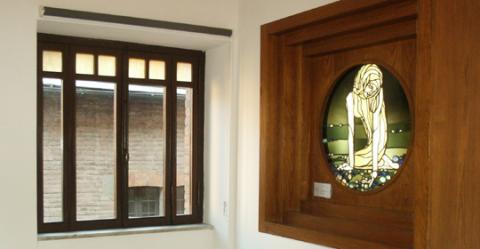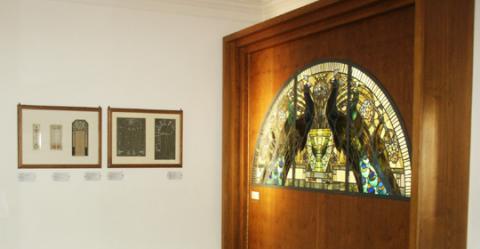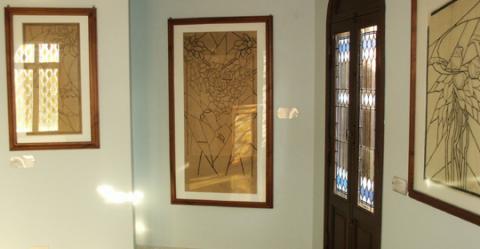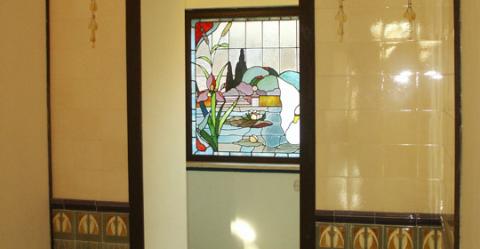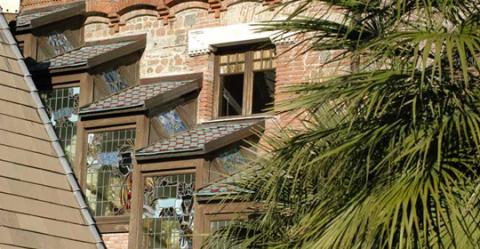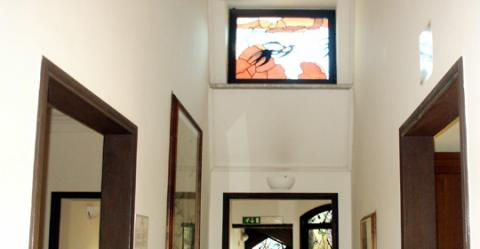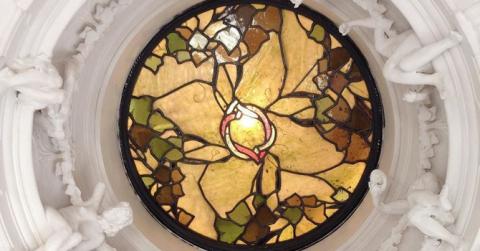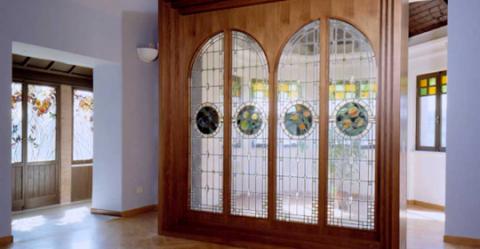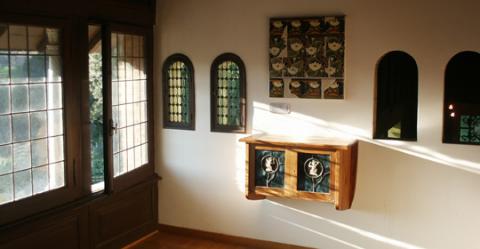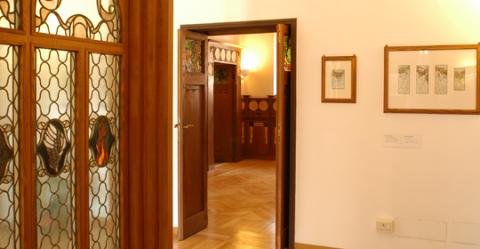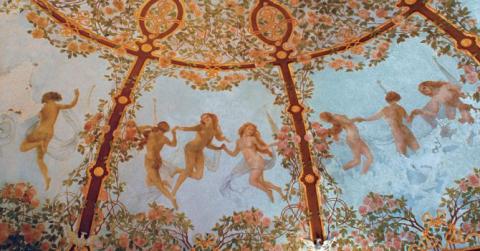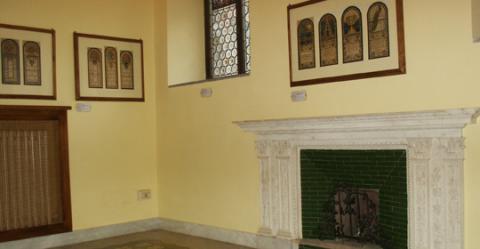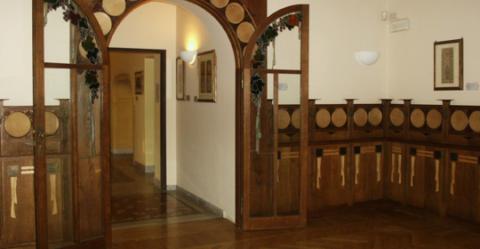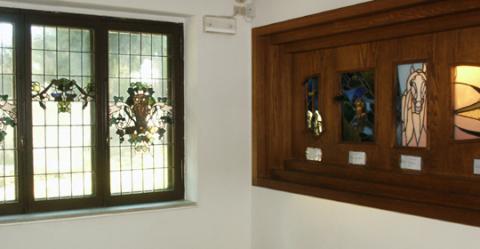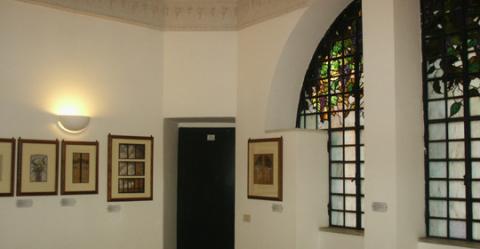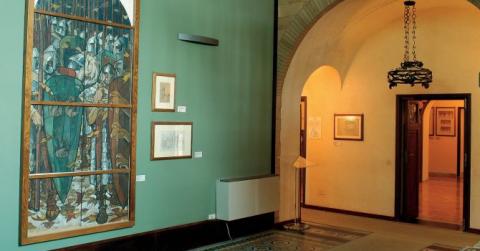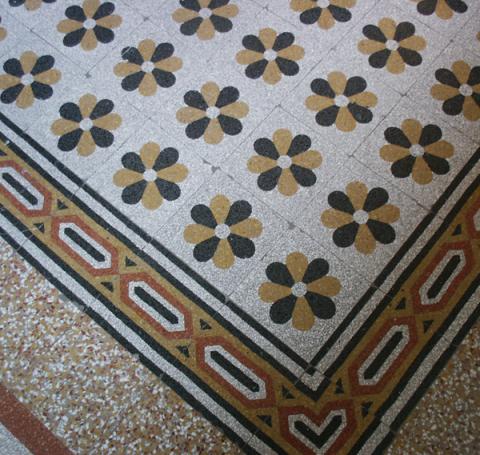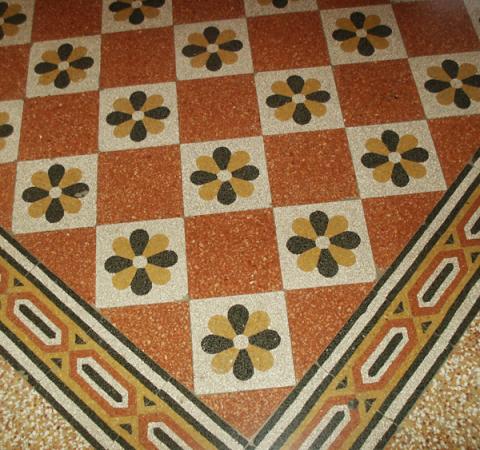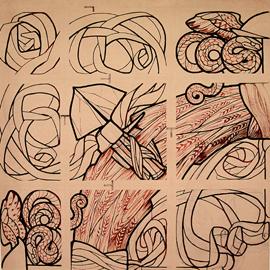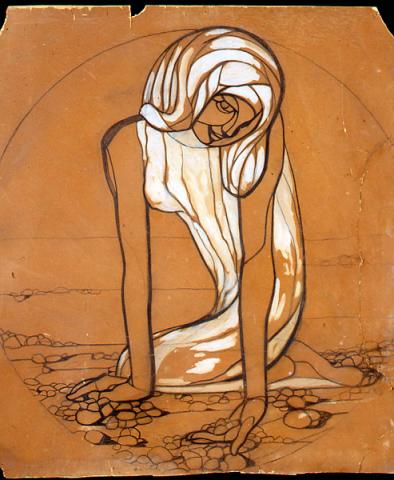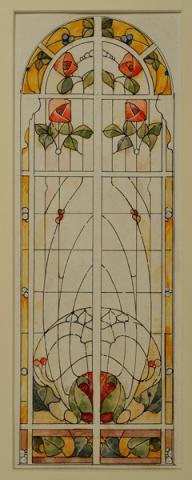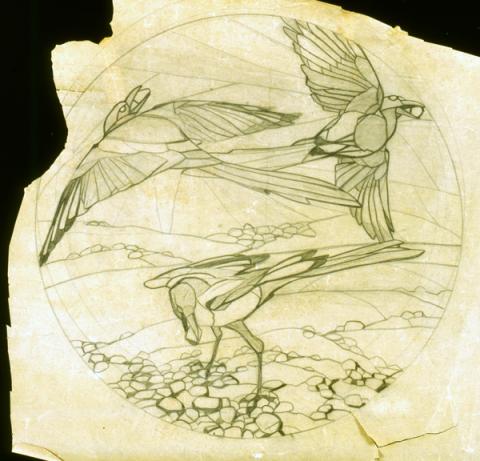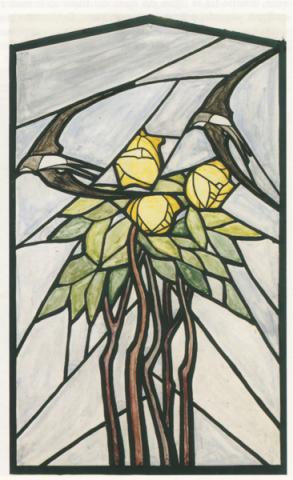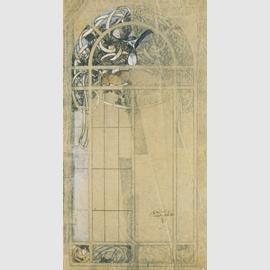Diana the Huntress

Bertel Thorvaldsen school
With the exception of the bow and quiver of arrows, the Torlonia statue of Diana with a hunting dog (the head shown in archive photographs had idealised features, hair falling in locks on her forehead and gathered up on the nape of her neck, but with two curls that fell onto her neck) varies from the traditional canons.
Her chiton is open at the sides, thereby revealing her legs, which was unusual for ancient iconography, but in keeping with an early eighteenth-century model (see the Diana the Huntress of Palazzo Orsini, now in Berlin, and a Diana in the Boboli Gardens) that was to remain extant until the mid-nineteenth century (plaster nymph in the Theatre in Villa Torlonia).
The style is academic Neoclassical, as is seen in the artificial rigidity of the folds of the chiton, which contrasts with the careful decorative touches of some of the details (a brooch in the form of a flower, the quiver decorated at the tip with lance-shaped leaves, etc.).
The work may be connected to the school of the Danish master Thorvaldsen and can be identified with the Diana in Palazzo Torlonia (Piazza Venezia) by Ercole Dante, a sculptor who worked on the decorations in Villa Torlonia.
Masterpieces of the hall
The hall
Opposite the “Berceau” Room is the Psyche Room, named for the paintings in the vault by Pietro Paoletti that tell the Story of Psyche.
The cycle was inspired by the frescoes in the Farnesina painted by Raphael, as is often the case in the houses of the nobility.






























